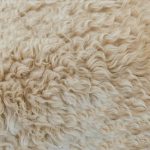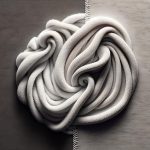When it comes to comfort, you're likely familiar with the softness of French terry and the smoothness of jersey knit. But have you ever stopped to consider how these fabrics really stack up against each other? French terry's plush pile on one side creates a cozy feel, while jersey knit's smooth surface on both sides provides a more athletic feel. But what about breathability, stretch, and durability? Do these factors tip the scales in favor of one fabric over the other? As you weigh your options for your next clothing purchase, it's worth exploring the nuances of these two popular fabrics.
Table of Contents
Texture and Softness Comparison
When you run your hand over French terry and jersey knit fabrics, you'll notice a distinct difference in texture, with French terry typically having a softer, more plush pile on one side and a smooth surface on the other, while jersey knit has a smooth, flat surface on both sides.
This texture difference significantly impacts the overall comfort of the fabric. French terry's plush pile creates a cozy, gentle feel against your skin, making it ideal for loungewear and casual clothing.
On the other hand, jersey knit's smooth surface provides a more streamlined, athletic feel, making it suitable for activewear and performance clothing.
In terms of softness, French terry generally has a more luxurious feel due to its plush pile. However, jersey knit can still be incredibly soft, especially if it's made from high-quality materials like cotton or bamboo.
The softness of both fabrics can also depend on factors like weave density and finishing treatments.
Overall, the texture and softness of French terry and jersey knit fabrics cater to different needs and preferences, making each suitable for specific applications and uses.
Breathability and Moisture Wicking
Considering the comfort benefits of French terry and jersey knit fabrics, it's equally important to evaluate their performance in terms of breathability and moisture wicking, as these factors significantly impact the wearer's experience during various activities.
When you're engaging in high-intensity activities or exercising outdoors, you'll want a fabric that can efficiently wick away moisture and dry quickly. French terry fabric tends to be more absorbent, holding onto moisture for longer periods.
On the other hand, jersey knit fabric is known for its ability to wick moisture away from the skin, allowing for faster evaporation and a drier feel.
You'll notice that jersey knit fabric is often designed with a specific weave that enhances breathability, making it a popular choice for athletic wear. In contrast, French terry fabric may be more suitable for casual, low-intensity activities where moisture wicking isn't a top priority.
When deciding between the two fabrics, you should consider the type of activity you'll be using the garment for and how important breathability is to you. By weighing these factors, you can choose the fabric that best meets your needs and preferences.
Stretch and Recovery Properties
Your fabric of choice should also offer the right balance of stretch and recovery to ensure a comfortable fit and optimal performance, whether you're lounging around or engaging in physical activities.
When it comes to French Terry and Jersey Knit, both fabrics have their own unique stretch and recovery properties.
French Terry, with its looped pile construction, provides a softer and more flexible fabric that can stretch up to 20-30% without losing its shape. However, it may not recover as quickly as Jersey Knit, which has a more elastic weave that can stretch up to 50% and snap back into place.
If you prioritize flexibility and mobility, Jersey Knit might be the better choice. On the other hand, if you prefer a softer and more relaxed fit, French Terry could be the way to go.
It's essential to consider your lifestyle and activities when choosing between these two fabrics. If you're always on-the-go, Jersey Knit's quick recovery might be more suitable. But if you're looking for a cozy and laid-back fit, French Terry's softness and flexibility might be the better option.
Weight and Drape Characteristics
Now that you've considered the stretch and recovery properties of French Terry and Jersey Knit, it's time to examine how their weights and drape characteristics impact the overall fit and feel of your garments. When it comes to weight, French Terry is generally heavier than Jersey Knit due to its thicker, plush pile. This added weight can provide a sense of comfort and coziness, but may also make the garment feel bulkier.
| Fabric Type | Weight and Drape Characteristics |
|---|---|
| French Terry | Heavier, thicker, and more structured |
| Jersey Knit | Lighter, thinner, and more fluid |
| French Terry | Tends to hold its shape, with a more defined drape |
| Jersey Knit | Drapes more loosely, with a softer, more relaxed fit |
| Both | Can be prone to wrinkles, but French Terry's weight helps reduce this issue |
As you can see, the weight and drape characteristics of French Terry and Jersey Knit can significantly impact the overall fit and feel of your garments. French Terry's added weight and structure can provide a sense of comfort and coziness, while Jersey Knit's lightness and fluidity can create a softer, more relaxed fit.
Wearability and Durability Factors
When choosing between French Terry and Jersey Knit, you'll want to think about how the fabric will hold up to repeated wear and tear, as well as how it will affect the overall comfort and practicality of your garment. French Terry is known for its durability and resistance to pilling, making it a great choice for activewear or clothing that will be worn frequently. The fabric's dense weave and soft loops also help to prevent snagging and runs.
In contrast, Jersey Knit is a bit more delicate and may not hold up as well to heavy wear. However, it's still a great choice for casual, everyday clothing.
Jersey Knit is also prone to stretching out over time, which can affect the fit of your garment. On the other hand, French Terry tends to retain its shape well, even after repeated washing and wear.
Considering these factors, you'll want to think about how you plan to use your garment and choose the fabric that best fits your needs. If you prioritize durability and practicality, French Terry may be the way to go.
Frequently Asked Questions
Can French Terry Be Used for Athletic Wear?
You'll find French Terry's unique properties make it an excellent choice for athletic wear, as it absorbs sweat well, breathes easily, and has a soft, brushed surface that's gentle against your skin during intense workouts.
Is Jersey Knit Suitable for Colder Climates?
Jersey knit's lightweight, breathable nature doesn't make it ideal for colder climates. You'll find it's more suitable for warmer weather or layering. If you want to wear jersey knit in cold weather, consider pairing it with thicker layers for warmth.
How Do I Care for French Terry Fabric?
You'll want to wash French terry fabric in cold water, don't over-dry it, and avoid ironing or steaming. You can also consider air-drying or tumble-drying on low to preserve its softness and texture.
Can I Use Jersey Knit for Home Decor Projects?
You're considering using jersey knit for home decor projects? It's a great choice! Jersey knit is versatile, easy to work with, and drapes well, making it perfect for curtains, pillow covers, or upholstery.
Does French Terry Shrink in the Wash?
You'll be happy to know that French terry generally doesn't shrink much in the wash, but it's still important to follow care instructions. You should wash it in cold water and avoid using high heat to dry it.
- Troubleshooting Common Issues When Working With Charmeuse Fabric - June 20, 2025
- An Introduction to Hemp Silk Charmeuse Fabric - June 20, 2025
- How to Dye Polyester Charmeuse Fabric for Cosplay and Costumes - June 20, 2025







